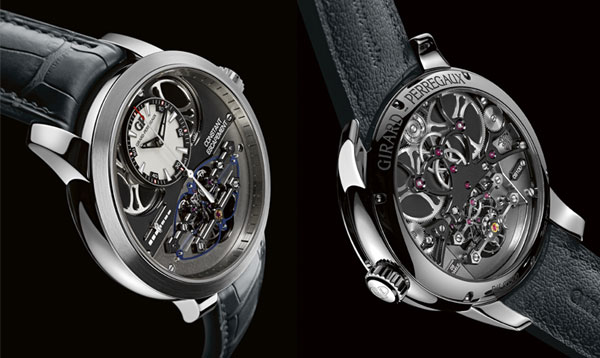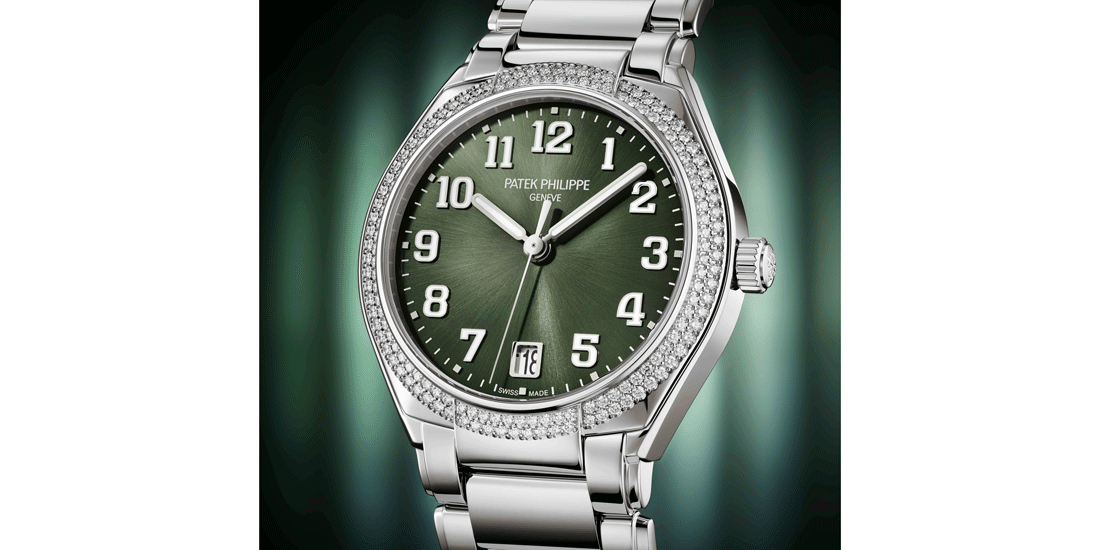
Constant Escapement
Case : polished white gold, circular satin-brushed bezel with satin-brushed interior, transparent sapphire crystal back Diameter : 42 mm Movement : mechanical hand-wound (GP Calibre MVT-009100-0007), one-week power reserve), 271 parts Functions : hour, minute, central seconds, linear power reserve Dial : silver-toned with grain finish and rhodium appliques Water-resistance : 30 m Strap : hand-sewn black alligator with folding clasp
Thus, a 14 micron silicon-buckled blade which is part of the intermediate device integrated within the new escapement, stores up energy to a certain threshold verging on instability, which remains identical, and is then passed on entirely and instantly. The role of the micro-accumulator enables it to compensate for the variable energy of the barrel by releasing the same amount of energy each time. Contrary to certain mechanisms in which the constant force is supplied over an average, this is an authentic constant-force escapement, as the latter is indeed instantaneous and continuous. The twin patented barrels, of which the cover and ratchet are made all of a piece and of which each drum contains two stacked series of springs, ensure seven days of autonomy displayed in linear mode at 3 o’clock. To provide maximum visibility of the lower part of the dial to the escapement, its butterfly wing-shaped frame and it blade vibrating along its central axis, the hours and minutes use a disc covering part of the barrels. Entirely exposed on the back of the white gold case, the unusual calibre representing a genuine ‘chronometric’ or precision-timing breakthrough reveals an atypical architecture that is immediately identifiable with the constant escapement. In a nod to history, Constant was the first name of Constant Girard-Perregaux, the watchmaker whose name was immortalised by the founders of the brand.






